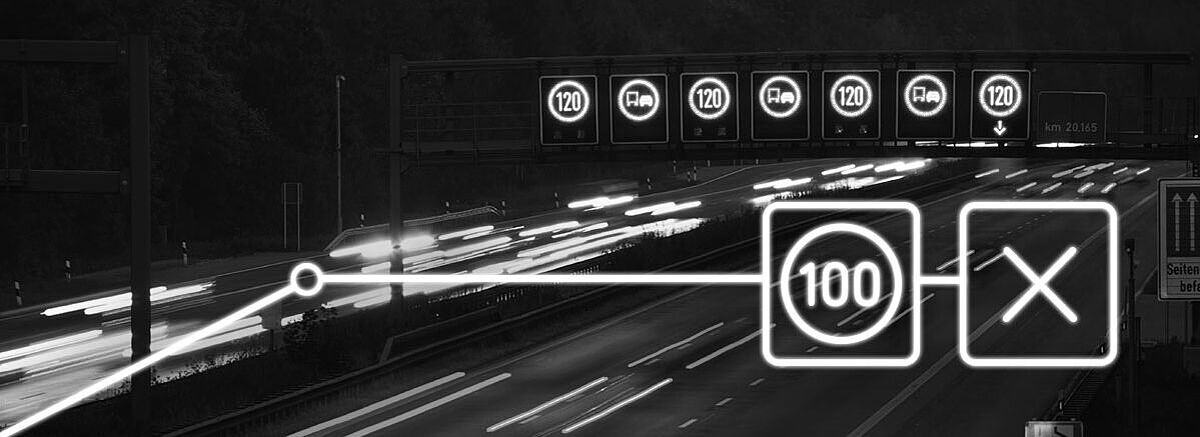CONTROL - LOCAL CONTROL MEASURES
Well-aimed control: Avoiding congestions and accidents

To locally improve traffic flow, our systems use a wide range of methods that evaluate traffic and environmental sensor data to calculate control measures that can be implemented automatically. Control is achieved directly by displaying binding instructions or indirectly by means of warnings and information.
In addition to automatic control, the systems can also be operated semi-automatically, i.e. a request is forwarded to the operator, who in the end decides on the measure to be taken.
The following mechanisms, among others, are available for active traffic management:
-
Speed harmonization based on the traffic load
-
Truck overtaking ban (with speed reduction if necessary) based on the percentage of trucks and the traffic load or in case of large speed differences
-
Wet road warning with speed reduction
-
Congestion warning with speed funnel
These displays can also be transmitted immediately to the vehicle using C2X technology. Here, not only the information of the last sign is available, but also the complete route. The predictive driving which is thus made possible offers additional potential for greater safety and lower gas consumption, and thus fewer emissions.
The inflow control can be used for highly loaded highways. It reduces the negative impact on the main carriageway by regulating approaching traffic at on-ramps. Traffic lights allow vehicles to enter only one at a time or in small groups, so that entering in throngs are avoided.
In sections with temporary, very high traffic volumes, the above-mentioned measures may not be sufficient to avoid traffic incidents at peak times. In this case, the temporary release of the hard shoulder is a way to avoid expensive expansion of the road network and to meet the temporary demand. Depending on the traffic load, dynamic displays either close the hard shoulder or open it to traffic. Video surveillance ensures that the hard shoulder is free of obstacles, such as broken-down vehicles.
Traffic incidents often occur as a result of insufficient capacities in intersections and are also highly situation-dependent. The node control procedure can be used to dynamically allocate lanes to the most heavily used lanes in the intersection, depending on the demand. As a further measure, the so-called speed split can be activated, which achieves a harmonization of the merging of traffic flows through lane-specific speed reductions.
All control measures can also be triggered manually via the operator-friendly graphical user interface. Measures to be taken (road works, accidents, and more) can be predefined, saved and retrieved as required.

